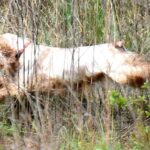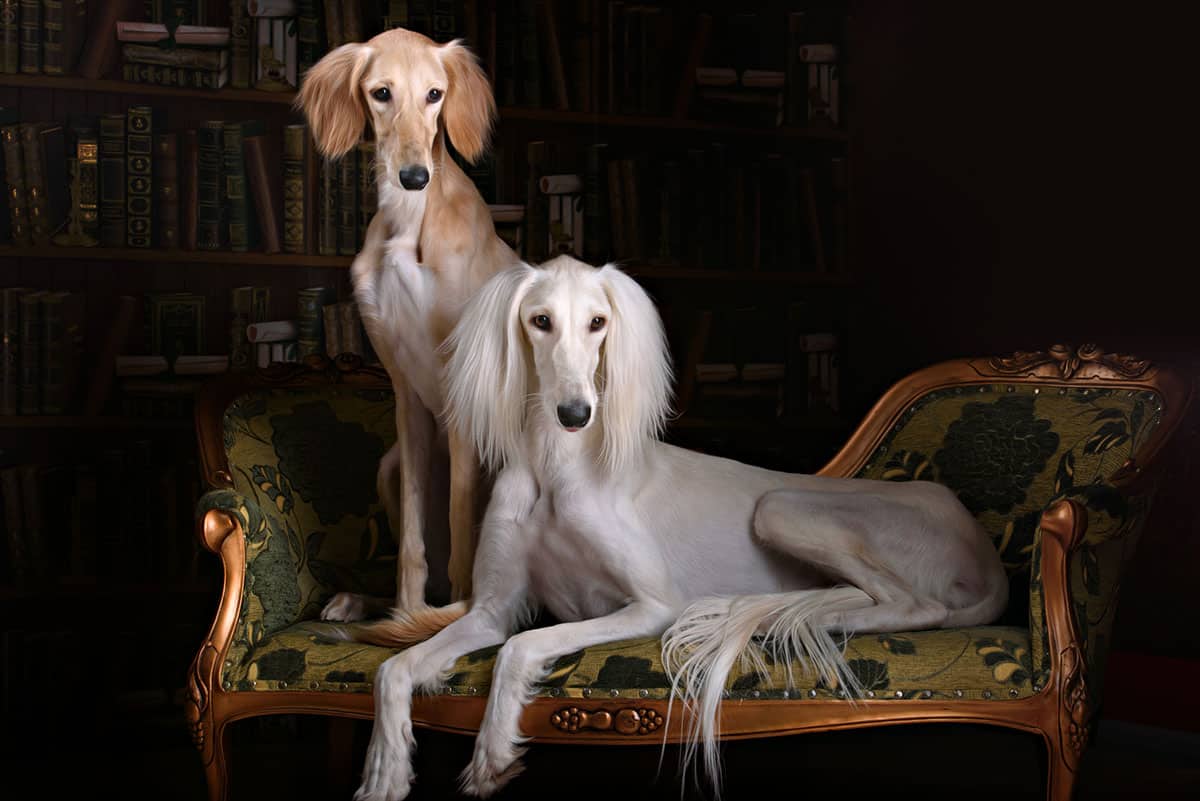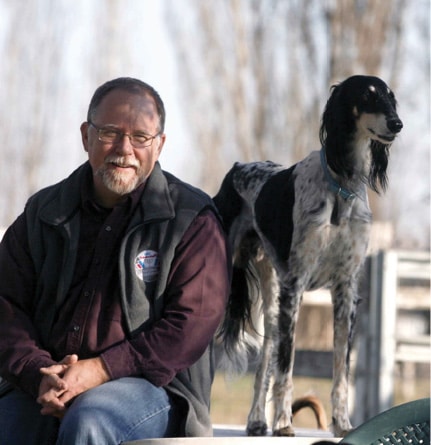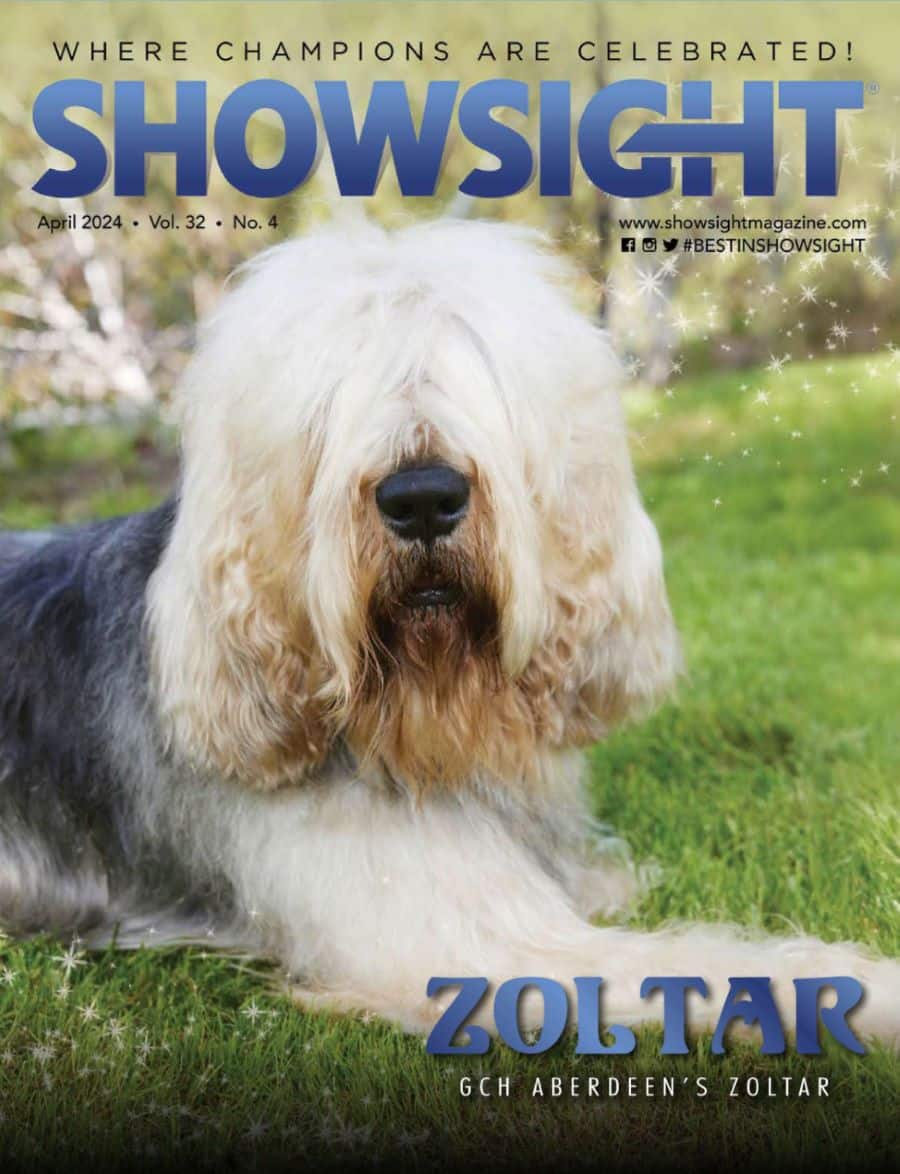But Isn’t Something Missing from the Saluki Standard?
It is useful to keep in mind that the 1927 Saluki standard was copied verbatim from the 1923 British standard (which has since been altered many times). Preserved unchanged since its adoption ninety-four years ago, I’ve heard it discussed and analyzed by breeders, exhibitors, judges, fanciers, and novices. From these conversations, there are several points about the standard that are worth a closer look.
Underline
There is no description of the underline even though the standard has the chest as, “Deep and moderately narrow.” We know from observing Salukis that there is a swooping rise from the point of the chest to the belly, and so the general understanding is that the underline is a curve that defines a deep chest and a comparatively narrow waist. Extreme underlines would be a straight diagonal from chest to belly or a flat line somewhat parallel to the ground.
Parallel Planes
This is the concept that the lines of the muzzle and skull should be horizontal and parallel to each other—and broken only by the “stop not pronounced.” The solitary phrase in the standard pertaining to this geometry has the skull as “moderately wide between the ears, not domed” (emphasis mine). So, as long as the skull is not bulging upwards and brachycephalic, the planes of the foreface and skull don’t have to be parallel. The muzzle itself is not mentioned, but either a “dished” or “Roman nose” would be considered undesirable.
Gait
While not mentioned, the breed standard’s authors (who had experience hunting with Salukis in the desert) did give us clues about movement. Look closely at what it says under General Appearance: “The whole appearance of this breed should give an impression of grace and symmetry and of great speed and endurance coupled with strength and activity to enable it to kill gazelle or other quarry over deep sand or rocky mountains.”
The key words grace, symmetry, speed, endurance, strength, and activity must be our guides. If these are essential, then the Saluki gait should reflect these characteristics—or at least the ability to use them as needed. We look at muscle condition and fitness as external indicators of potential speed and strength. When Salukis are trotted around the ring, we expect to see an athlete’s movement—balanced, agile, easy, and efficient, giving the impression that the hound’s inner resources are ready to go to work. An efficient gait is gracefully symmetric with no wasted movement from paddling, hackneying, mincing, weaving, or crossing. It should propel the Saluki forward, effortlessly.
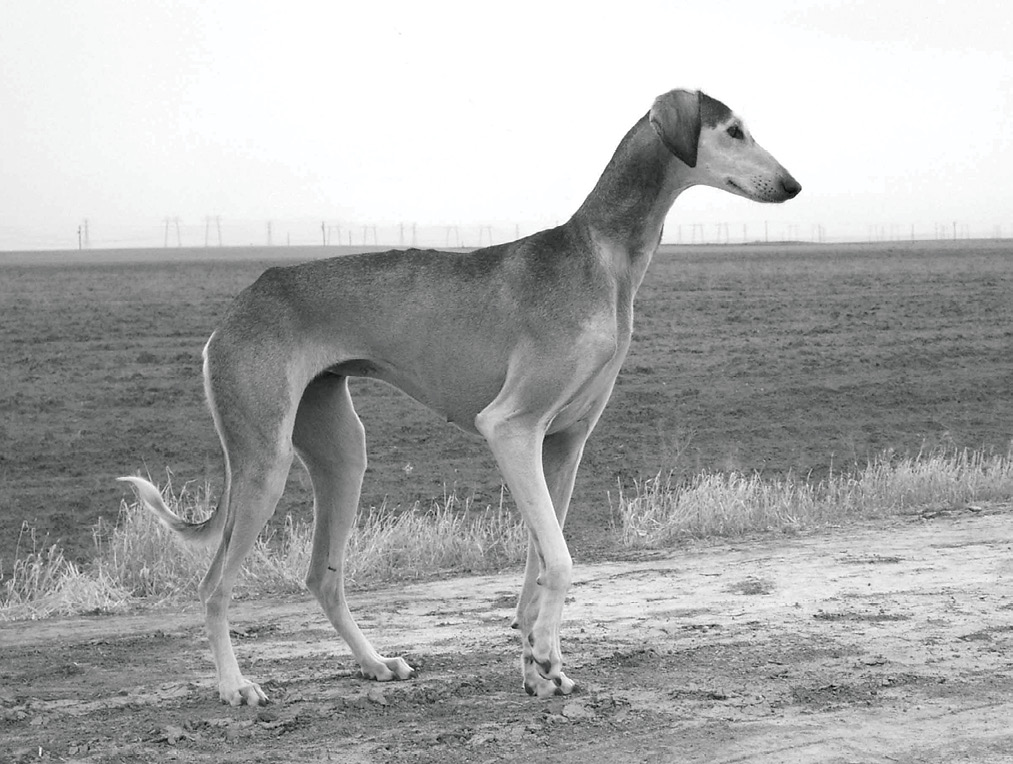
So, even though not described, there are concepts in the standard for evaluating a Saluki’s gait—which should predict hunting ability from the grace and symmetry of their ring movement. Clearly, the kind of speed, endurance, and strength needed to catch a live hare or gazelle on varied terrain can’t be demonstrated in a show ring, but neither can prey drive, hunting savvy or the ability to spot game at a distance—the invisible qualities of a good Saluki.
Disqualifications
It’s simple. There are none in the standard—not even for color or markings.
What Did They Mean About…?
Some of the nearly 100-year-old British terms in our standard have slightly different meanings today, and this can be confusing. To grasp the standard’s intent, we look to other documents of the 1920s (dictionaries, other breed standards, and show reports) to see how the words were used.
Teeth
Teeth are described with only two adjectives: “strong” and “level.” Clearly, strength is necessary in a breed whose standard calls for the ability “to kill gazelle or other quarry.” It’s pretty straight forward, but what about level? We find the answer in a contemporary British dictionary: “Level = adjective – horizontal: even, smooth; even with anything else: in the same line or plane: equal in position or dignity.” In standards of the 1920s, bites (under, over, scissors, and pincer) were described separately from the quality of being level (not crooked). The word “level” described the relationship of the individual teeth to each other. The scissors bite of the Saluki is not only perfectly fine, but precisely what you’d want in a hunting hound.
Colors
Colors named in the standard are: White, Cream, Fawn, Golden, Red, Grizzle & Tan, Tricolor (White, Black, & Tan), and Black & Tan. In 1923, chocolates, red and white partis—and other colors we see today—were not known and therefore not listed at that time. There are two things to keep firmly in mind: The standard’s authors used specific language to encompass the spectrum of all Saluki colors known at the time; and no color or markings are disqualified.
What does “Grizzle & Tan” mean and why weren’t variations like “silver grizzle” included?
Well, in the early 20th century, dictionaries tell us that “grizzle” meant hair or fur that was gray—as in a grizzled beard. The phrase “Grizzle & Tan” was meant to describe the pattern colors we now call “grizzle” and this term didn’t start being used as the pattern’s description until the mid-1930s, when descriptions like “rufus grizzle,” “deer grizzle,” and “silver grizzle” began to appear.
Why is “parti-color” not there?
This phrase describes colored spots or patches on white, but in the early 1920s, “parti-color” was only occasionally used in breed standards. Significantly, the Saluki standard’s authors chose “Tricolor (White, Black, & Tan)” as they believed that this embraced any pattern of the three colors, and included in this was parti, tri, and even “Black & Tan”—which may have bits of white. Interestingly enough, in the early days, any color or pattern outside the standard could be registered in both Britain and the States. Partis were simply registered as “golden and white” or “white, black, & tan,” and you can also find “red/gold,” “black and pale fawn,” and “white, silver, and fawn markings.”
The Saluki standard was carefully crafted for flexibility so as to accommodate a range of correct types. We have only to understand both the intentions of the authors and how language has changed over time in order to see that our standard is really far more inclusive—rather than exclusive.
But Isn’t Something Missing From the Saluki Standard? By Brian Patrick Duggan
From the January 2021 issue of Showsight Magazine
Saluki Breed Magazine
Showsight Magazine is the only publication to offer dedicated Digital Breed Magazines for ALL recognized AKC Breeds.
Read and learn more about the Saluki dog breed with articles and information in our Saluki Breed Magazine.
Saluki Breed Magazine - Showsight
